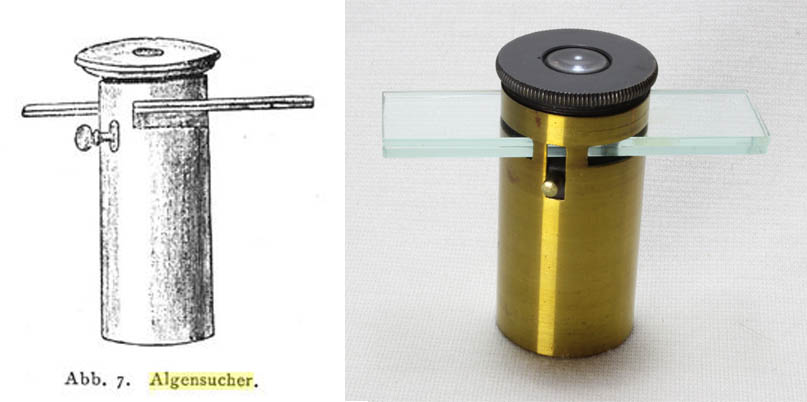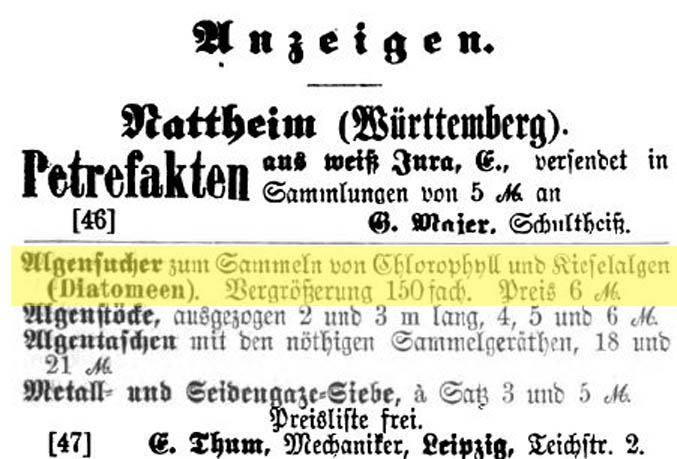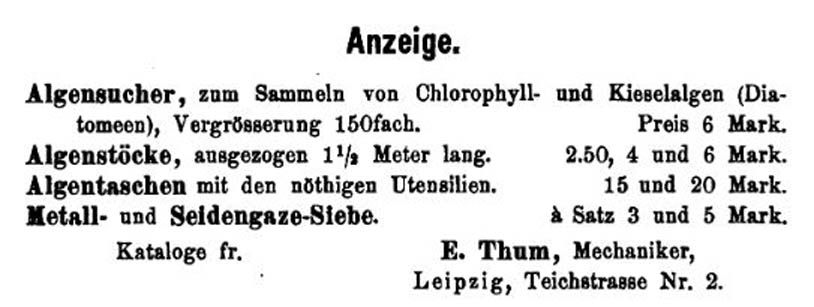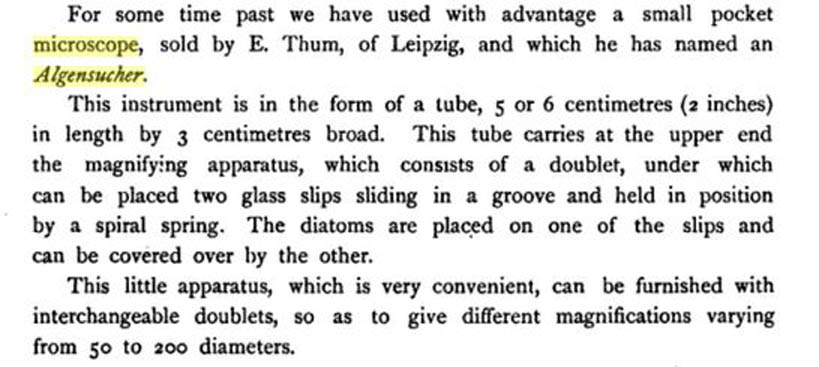MICROSCOPE-ANTIQUES.COM © 2013-15.
WHAT IS AN ALGENSUCHER?

 THUM AD FROM 1881
THUM AD FROM 1881
 THUM AD FROM 1880
THUM AD FROM 1880
 FROM VAN HEURCK
FROM VAN HEURCK
What is an Algensuscher? The literal translation from the German is 'Algae Seeker.' Recalling that diatoms are a form of algae, these instruments were used to scan specimens of pond water and the like for diatoms. These small, pocket-sized simple microscopes would be taken into the field, to quickly scan specimens for diatoms, to be studied later in the home or laboratory.
Devices that could be used for this purpose were available much earlier, but it was the famous German diatom mounter, Edourd Thum, who first named these instruments Algensuschers about 1880, and indeed specifically advertised them. Thum's Algensuscher was highly recommended by the famed microscopist and diatom expert Henri F. Van Heurck. Van Heurck noted Thum's instrument had interchangeable doublets with magnification varying from 50 to 200X. Note that a low power loupe or magnifying glass would be insufficient for this purpose, but, as Van Heurck stated, a high power Codington lens could be used for this purpose to some extent. Note that many instruments which might qualify as 'Algensuchers' were made, but relatively few had the power or resolution required. One must remember that the idea is to specifically confirm the presence of diatoms, not just little unidentified specks in the specimen.
The original Algensuscher of Thum provided a slot into which two small thin glass slides were placed, one on top of the other with the specimen between them. It also provided more than one lens for a selection of magnifications, though a single high power lens instrument was sometimes what was used. Among the instruments in this collection which might qualify as 'Algensuschers,' probably the best candidates are those by Waechter, and especially Leidig, though even Rae's microscope, which is ten or fifteen years earlier than Thum's, could be used for this purpose to some extent. A later Leitz 'Taschenmikroskop' in this collection, with three fine lenses of appropriate magnifications, is an excellent example of an instrument that could be used as an algensucher. To date, I have not seen an actual example of Thum's instrument, though a drawing in 'Die Grunalgen' by W. Migula shows an instrument very similar if not identical to Waechter's. I have seen some other cheap simple microscopes like the 'microscope or floroscope' called 'Algensuscher's' though they would likely be a poor substitute and should probably not be referred to as such.

 THUM AD FROM 1881
THUM AD FROM 1881 THUM AD FROM 1880
THUM AD FROM 1880 FROM VAN HEURCK
FROM VAN HEURCK